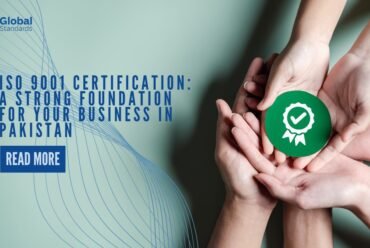What is ISO 9001 Standard?
What is ISO 9001 Standard? The Complete Guide
In today’s competitive business landscape, organizations constantly seek ways to improve efficiency, reduce errors, and boost customer satisfaction. This is exactly where the ISO 9001 standard comes into play. As the world’s most recognized Quality Management System (QMS) framework, ISO 9001 helps businesses streamline operations while delivering consistent quality. Global Standards make it easier to understand this mavellous standard to enhance the corporate performances using the limited resources.
But what makes ISO 9001 so valuable? Let’s break it down:
-
What ISO 9001 is and why it matters
-
Key requirements and structure
-
Major benefits of certification
-
Step-by-step implementation process
-
Common challenges and proven solutions
By the end, you’ll understand how ISO 9001 can transform your organization’s quality control and operational excellence.
What is ISO 9001?
Simply put, ISO 9001 is an international standard that sets out criteria for an effective Quality Management System. Developed by the International Organization for Standardization (ISO), it provides a framework to ensure products and services consistently meet customer and regulatory requirements.
Unlike rigid quality control methods, ISO 9001 follows a process-based approach that any organization—whether small business or multinational—can adapt. Moreover, its latest version (I.S.O 9001:2015) emphasizes risk-based thinking, making it more dynamic than ever.
Key Fact: Over 1 million companies in 170+ countries are I.S.O 9001 certified, proving its global relevance.
Key Requirements of ISO 9001
The standard is built on the Plan-Do-Check-Act (PDCA) cycle for continuous improvement. Here’s what it covers:
1. Organizational Context & Leadership
First, companies must analyze internal/external factors affecting quality. Next, top management must demonstrate commitment by defining policies, roles, and objectives. Without leadership buy-in, implementation often fails.
2. Planning
This phase involves identifying risks, opportunities, and quality objectives. For example, a manufacturer might aim to reduce defects by 15% within a year.
3. Support & Resources
Employees need proper training, clear communication channels, and documented procedures. Additionally, necessary infrastructure (equipment, software) must be in place.
4. Operational Controls
Processes must be mapped and monitored to ensure consistency. For instance, a food company may implement hygiene checks at every production stage.
5. Performance Evaluation
Regular audits, customer feedback, and data analysis help track progress. If gaps are found, corrective actions are taken immediately.
6. Continual Improvement
The ultimate goal is to refine processes continually—whether through better supplier controls or enhanced staff training.
Top Benefits of ISO 9001 Certification
Why should your business adopt ISO 9001? Here’s why it’s worth it:
1. Enhanced Customer Satisfaction
By standardizing processes, errors reduce dramatically. Happy customers mean repeat business and stronger brand loyalty.
2. Operational Efficiency
Waste and rework decrease when workflows are optimized. For example, Toyota saved millions by integrating ISO 9001 with Lean Manufacturing.
3. Competitive Advantage
Many clients and tenders require I.S.O 9001 certification. Thus, certified companies often win more contracts.
4. Better Decision-Making
Data-driven insights from audits and KPIs help leaders make smarter choices.
5. Employee Engagement
Clear procedures reduce confusion, empowering staff to perform better.
How to Get ISO 9001 Certified (Step-by-Step)
Global Standards help organizations to get certified agaisnt this standard successfully by following steps and organizations can contact us to get certified and trained as well:
Step 1: Conduct a Gap Analysis
Global Standards suggests to compare current processes against I.S.O 9001 requirements. This highlights areas needing improvement.
Step 2: Develop a QMS
Document policies, objectives, and procedures. Ensure leadership reviews and approves the plan.
Step 3: Train Employees
Staff must understand their roles in maintaining quality. Workshops and manuals help reinforce this.
Step 4: Implement & Monitor
Roll out the QMS and track performance via internal audits.
Step 5: Certification Audit
An accredited body assesses compliance. If successful, you’ll receive I.S.O 9001 certification!
Common Challenges & Solutions
1. Lack of Management Support
Solution: Present case studies showing ROI—like how General Electric cut costs by 20% post-certification.
2. Employee Resistance
Solution: Involve teams early and link QMS goals to performance incentives.
3. Over-Documentation
Solution: Focus on essential processes—no need to document every minor task.
Summary
In summary, It isn’t just a certificate—it’s a proven strategy for boosting quality, efficiency, and customer trust. Whether you’re a startup or an enterprise, certification can drive measurable growth.
Ready to begin? Start with a gap analysis with Global Standards, secure leadership commitment, and engage employees. Ultimately, ISO 9001 is an investment that pays off in higher profits and long-term success.




No Comments